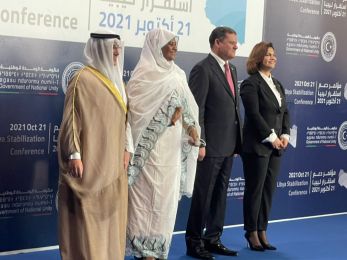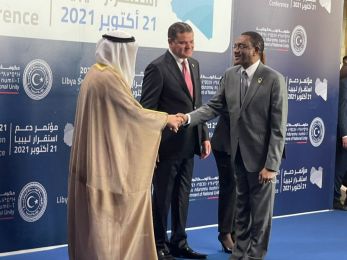PANAPRESS
Panafrican News Agency
Nigeria: UNHCR explains growing number of refugees, migrants from Africa
Lagos, Nigeria (PANA) - The large majority of the 137,000 people who crossed the Mediterranean Sea into Europe during the first six months of 2015 were fleeing from war, conflict or persecution, making the Mediterranean crisis primarily a refugee crisis, a UNHCR report, released Wednesday has said.
The reports, received here by PANA, said one third of the men, women and children who arrived by sea in Italy or Greece were from Syria, whose nationals are almost universally deemed to qualify for refugee status or other forms of protection.
"The second and third most common countries of origin are Afghanistan and Eritrea, whose nationals are also mostly considered to qualify for refugee status," the report said.
“As Europe debates the best way to deal with the rising crisis on the Mediterranean, we must be clear: most of the people arriving by sea in Europe are refugees, seeking protection from war and persecution,” said António Guterres, the UN High Commissioner for Refugees.
Data received from Greece, Italy, Malta and Spain charts a 83 per cent increase in refugees and migrants crossing the Mediterranean from January to June – 137,000 compared to 75,000 in the same period last year. Historically, crossings significantly increase in the second half of the year, in particular over the summer months, so it is expected the numbers will continue to soar. Arrivals in the second half of 2014, for example, were almost double those of the first half.
According to the report, "The number of deaths at sea rose to record levels in April 2015, and then dropped dramatically in May and June. Between January and March, 479 refugees and migrants drowned or went missing, as opposed to 15 during the first three months of the year before. In April the situation took an even more terrible turn. In a number of concurrent wrecks, an unprecedented 1,308 refugees and migrants drowned or went missing in a single month (compared to 42 in April 2014). In May, the number of refugees and migrants drowned or missing at sea fell to 68, a quarter of the figure only one year earlier (226). The downward trend continued in June, which saw 12 deaths compared to 305 in 2014.
“The decline in people drowning over the past two months is encouraging; a sign that with the right policy, backed by an effective operational response, it is possible to save more lives at sea,” said Guterres. “Nonetheless, we must stay vigilant. For the thousands of refugees and migrants who continue to cross the Mediterranean every week, the risks remain very real.”
The report shows that the eastern Mediterranean route from Turkey into Greece has now surpassed the central Mediterranean route (from north Africa to Italy) as the main source of maritime arrivals.
The majority of those arriving in Greece are refugees from Syria. Many will have first fled for safety to neighbouring countries, such as Turkey and Lebanon. But after years of rising pressure and insufficient international support, the economies and infrastructure of many refugee-hosting countries are struggling to cope, making it increasingly difficult for refugees to find work, shelter, healthcare, and education. As humanitarian appeals to assist them go underfunded, many have no choice but to move on.
In Greece, a limited infrastructure providing less than 2,000 reception places has meant inadequate reception conditions for new arrivals. Many refugees and migrants continue their journey across The former Yugoslav Republic of Macedonia and Serbia to and through Hungary. Every day, an average of over 1,000 people enter The former Yugoslav Republic of Macedonia from Greece, compared with 200 just a few weeks ago. There are frequent reports of abuse and violence along the way by smugglers and criminal networks, as well as the increasing tightening of borders.
“Europe has a clear responsibility to help those seeking protection from war and persecution,” said Guterres. “To deny that responsibility is to threaten the very building blocks of the humanitarian system Europe worked so hard to build. European countries must shoulder their fair share in responding to the refugee crisis, at home and abroad.”
-0- PANA VAO 1July2015
The reports, received here by PANA, said one third of the men, women and children who arrived by sea in Italy or Greece were from Syria, whose nationals are almost universally deemed to qualify for refugee status or other forms of protection.
"The second and third most common countries of origin are Afghanistan and Eritrea, whose nationals are also mostly considered to qualify for refugee status," the report said.
“As Europe debates the best way to deal with the rising crisis on the Mediterranean, we must be clear: most of the people arriving by sea in Europe are refugees, seeking protection from war and persecution,” said António Guterres, the UN High Commissioner for Refugees.
Data received from Greece, Italy, Malta and Spain charts a 83 per cent increase in refugees and migrants crossing the Mediterranean from January to June – 137,000 compared to 75,000 in the same period last year. Historically, crossings significantly increase in the second half of the year, in particular over the summer months, so it is expected the numbers will continue to soar. Arrivals in the second half of 2014, for example, were almost double those of the first half.
According to the report, "The number of deaths at sea rose to record levels in April 2015, and then dropped dramatically in May and June. Between January and March, 479 refugees and migrants drowned or went missing, as opposed to 15 during the first three months of the year before. In April the situation took an even more terrible turn. In a number of concurrent wrecks, an unprecedented 1,308 refugees and migrants drowned or went missing in a single month (compared to 42 in April 2014). In May, the number of refugees and migrants drowned or missing at sea fell to 68, a quarter of the figure only one year earlier (226). The downward trend continued in June, which saw 12 deaths compared to 305 in 2014.
“The decline in people drowning over the past two months is encouraging; a sign that with the right policy, backed by an effective operational response, it is possible to save more lives at sea,” said Guterres. “Nonetheless, we must stay vigilant. For the thousands of refugees and migrants who continue to cross the Mediterranean every week, the risks remain very real.”
The report shows that the eastern Mediterranean route from Turkey into Greece has now surpassed the central Mediterranean route (from north Africa to Italy) as the main source of maritime arrivals.
The majority of those arriving in Greece are refugees from Syria. Many will have first fled for safety to neighbouring countries, such as Turkey and Lebanon. But after years of rising pressure and insufficient international support, the economies and infrastructure of many refugee-hosting countries are struggling to cope, making it increasingly difficult for refugees to find work, shelter, healthcare, and education. As humanitarian appeals to assist them go underfunded, many have no choice but to move on.
In Greece, a limited infrastructure providing less than 2,000 reception places has meant inadequate reception conditions for new arrivals. Many refugees and migrants continue their journey across The former Yugoslav Republic of Macedonia and Serbia to and through Hungary. Every day, an average of over 1,000 people enter The former Yugoslav Republic of Macedonia from Greece, compared with 200 just a few weeks ago. There are frequent reports of abuse and violence along the way by smugglers and criminal networks, as well as the increasing tightening of borders.
“Europe has a clear responsibility to help those seeking protection from war and persecution,” said Guterres. “To deny that responsibility is to threaten the very building blocks of the humanitarian system Europe worked so hard to build. European countries must shoulder their fair share in responding to the refugee crisis, at home and abroad.”
-0- PANA VAO 1July2015






